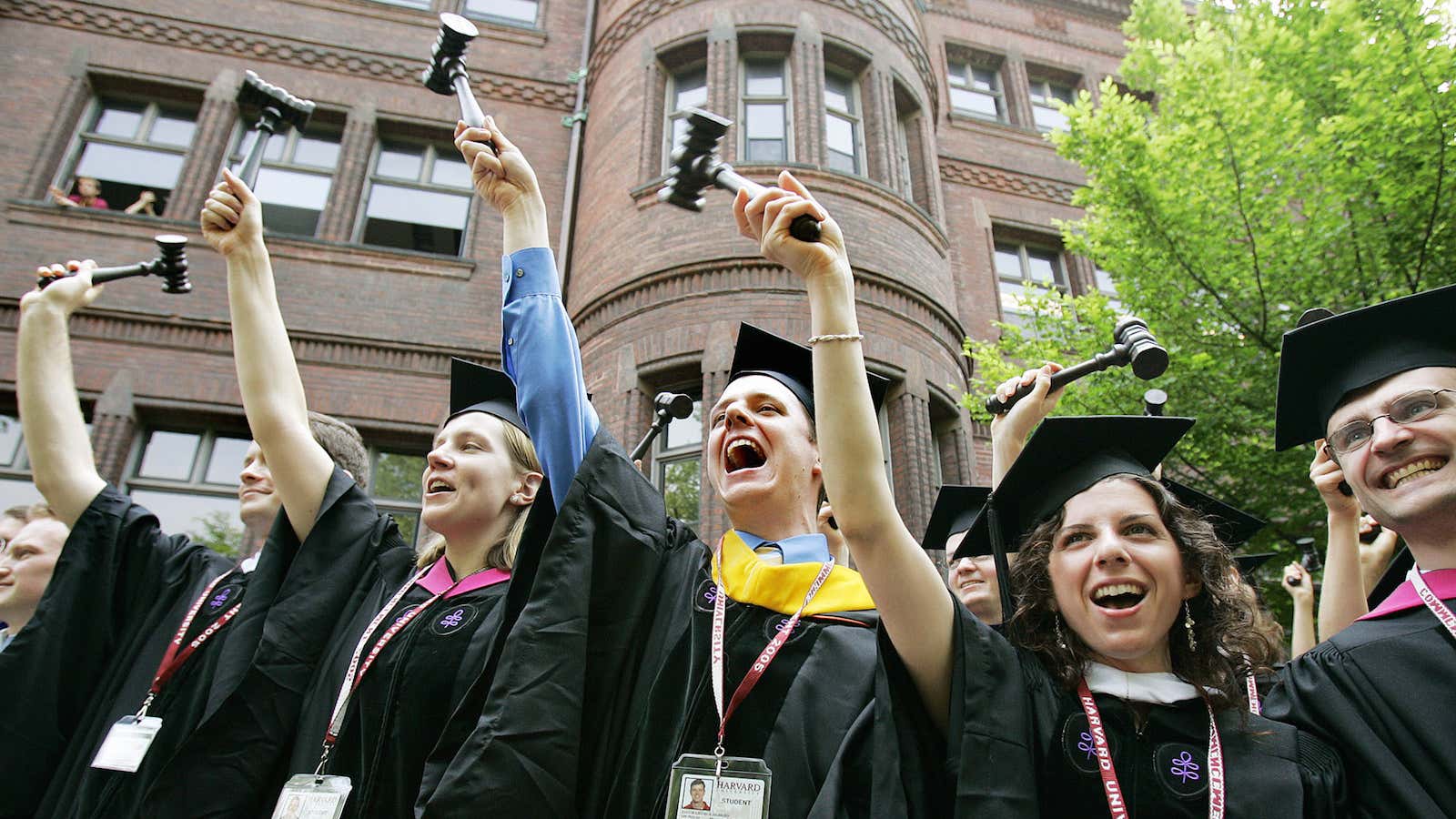To the unassuming eye, Harvard Law School’s 80-year-old shield is just three sheaves of wheat.
But the image is actually based on the crest of the Royalls, a slave-owning US family that helped establish the school’s first professorship in the 18th century. Due to its historic association with racism, Harvard Law students—amid a national debate about racist legacies on college campuses—have been calling for the shield to be replaced. On March 4, a committee of students, alumni, faculty, and staff at the school formally requested its removal.
Today (March 14), Harvard University’s governing body accepted the idea. “We believe the School should have the opportunity to propose a new shield that [is] conducive to unifying the Law School community rather than dividing it,” Harvard president Drew Faust announced in a letter.
Law school dean Martha Minow, who supported the committee recommendation to replace the shield earlier this month, wrote in a separate letter: “We cannot choose our history, but we can choose that for which we stand.”
Not everyone will be pleased by the decision. Some critics believe that scrubbing racist legacies from university campuses—at Harvard, but also Yale, Princeton, and other places where these debates are raging—is an unnecessary sanitization of history. But there is also the opposite argument that leaving these legacies intact undermines schools’ progressive contemporary values.
Harvard Law School’s webpages will be updated to omit the shield by mid-April, and Harvard will soon begin seeking recommendations for a new shield, ideally to be introduced in time for the school’s bicentennial in 2017.
